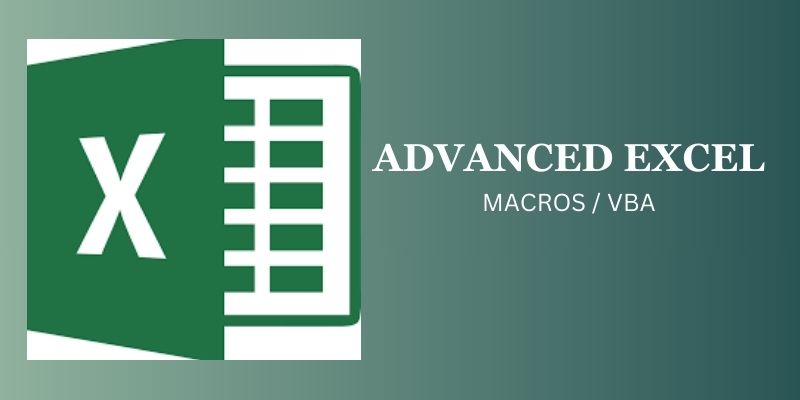In today’s fast-paced business environment, efficiency and productivity are paramount. Excel, one of the most widely used tools for data analysis and management, offers powerful automation capabilities through macros and Visual Basic for Applications (VBA). In this blog, we’ll explore how macros and VBA automate tasks in Advanced Excel, saving time and reducing errors. Enhance your expertise with focused Excel Training in Chennai and gain expertise in advanced Excel functions, pivot tables, data visualization.
Understanding Macros
A macro in Excel is a sequence of commands and instructions that automate repetitive tasks. These tasks can range from simple actions like formatting cells to complex operations such as data manipulation and report generation. Macros can be recorded using Excel’s built-in recorder or written manually using VBA.
Recording Macros
To record a macro in Excel, navigate to the “View” tab, click on “Macros,” and then select “Record Macro.” You’ll be prompted to give the macro a name and optionally assign it to a shortcut key. Once recording starts, perform the actions you want to automate. When you’re done, stop recording, and Excel will save the sequence of actions as a macro.
Using VBA for Advanced Automation
While recording macros is convenient for simple tasks, VBA offers more flexibility and control for advanced automation. VBA is a programming language integrated into Excel that allows you to write custom scripts to manipulate data, interact with other applications, and create user-defined functions. Boost your career prospects by joining a comprehensive Advanced Excel Course Online, led by experts to equip you with the skills to master this potent spreadsheet software.
Creating Custom Functions with VBA
One of the powerful features of VBA is the ability to create custom functions that go beyond Excel’s built-in functions. For example, you can write a VBA function to calculate complex financial metrics, perform text manipulation, or retrieve data from external sources.
Automating Data Manipulation
Macros and VBA are particularly useful for automating data manipulation tasks. For instance, you can write a VBA script to import data from multiple sources, clean and transform the data, and generate reports automatically. This automation not only saves time but also ensures consistency and accuracy in data processing.
Integration with Other Applications
Another advantage of macros and VBA is their ability to integrate with other applications. For example, you can use VBA to automate data exchange between Excel and databases, web services, or even other Office applications like Word and Outlook. This seamless integration streamlines workflows and eliminates manual data entry errors.
Enhancing User Interface with Forms
VBA can also be used to create custom user interfaces (UI) in Excel. By designing forms and dialog boxes, you can create user-friendly interfaces for data input, configuration settings, and report generation. This enhances usability and simplifies complex tasks for users. Revitalize your skill set with cutting-edge Training Institutes in Chennai, offering the pathway to enhance your expertise in development.
Macros and VBA are powerful tools that automate tasks in Excel, ranging from simple operations to complex data manipulation and integration with other applications. By leveraging macros and VBA, businesses can improve efficiency, reduce errors, and streamline workflows, ultimately leading to better decision-making and productivity.


